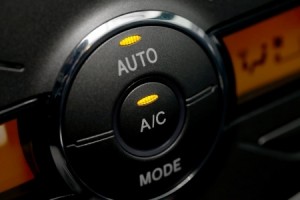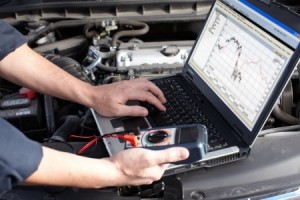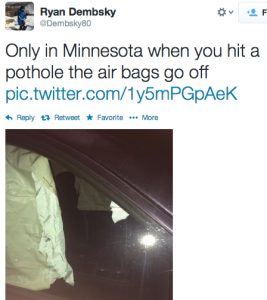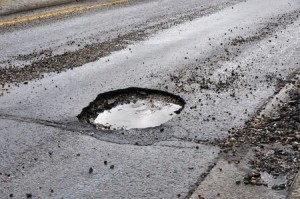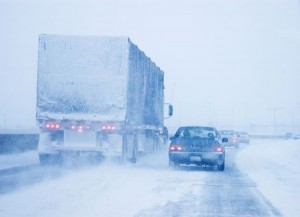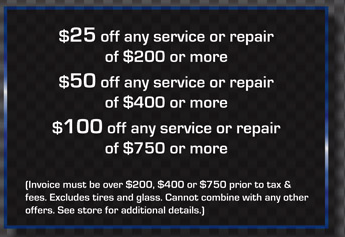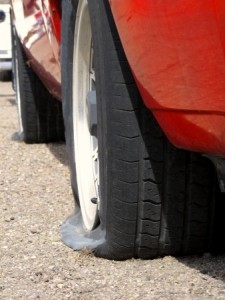 It’s pothole season, and that means your tires are exposed to dangerous crevices on a daily basis. Particularly nasty potholes can puncture your tire, leaving you high and dry, unless you know how to fix the problem (or you have AAA). Changing your tire is something everyone should know how to do, so follow along as we walk you through the procedure in seven easy steps.
It’s pothole season, and that means your tires are exposed to dangerous crevices on a daily basis. Particularly nasty potholes can puncture your tire, leaving you high and dry, unless you know how to fix the problem (or you have AAA). Changing your tire is something everyone should know how to do, so follow along as we walk you through the procedure in seven easy steps.
Find a Flat, Safe Surface – Although it’s not always easy to get to a perfectly flat surface, make sure you pull far enough off the road that you’re out of danger, especially if you need to change a tire on the driver’s side. If you can’t get to a safe area, call a tow truck. It’s never worth risking your life. Make sure your hazard lights are on as well.
Secure Your Car – You want to keep your car in a stationary position, so put your car in park and throw the parking break on for good measure. For added safety, put a rock or other larger object in front of your tires to ensure your car stays as still as possible throughout the process.
Jack It Up – Secure the jack under your car’s frame near the tire that you are going to change. Reference your owner’s manual to make sure the jack is in the correct position. Typically this is just behind the front wheel well if you’re changing the front tires, and just in front of the back wheel well if you’re changing the back tires, but give the manual a glance. Once secure, raise the jack so it is supporting the car, but not lifting it further than need be. Double check to make sure the jack is perpendicular to the ground.
Loosen Up – Remove the hubcap and loosen the nuts. By keeping the wheel on the ground during this process, you’ll ensure that you’re turning the nuts and not the whole wheel. Once that is done, crank the jack high enough to remove the flat. Completely remove all the nuts at this point.
Add The Spare – Remove the flat tire and put the spare tire in place. Once it’s on, securely tighten the nuts by hand until they are snug. You don’t need to tighten the nuts with a tire wrench until the wheel is back on the ground.
Lower The Jack – Slowly lower the tire until it’s back on the ground, but not so much that the wheel is fully supporting itself. Tighten the nuts with a tire iron as much as possible. After the nuts are secure, lower the jack until it is no longer supporting the car. Remove the jack and replace the hubcap.
Clean Up – Put the jack back in the trunk along with any other supplies you used during the process. Take the flat tire with you until you get to a location where it can be disposed of properly. If your spare tire is a different shape and size than the other tires, you’ll want to take your car into a service center sooner rather than later, as driving long distances on a spare can be dangerous.
Related source: WikiHow
